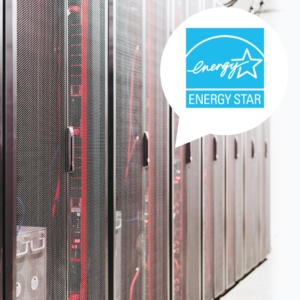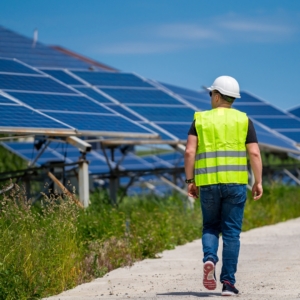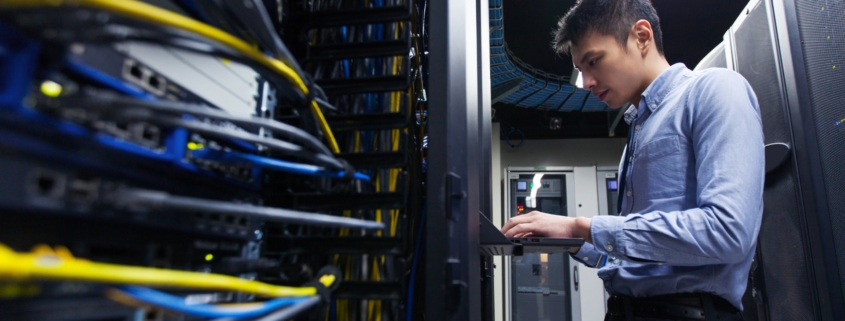How Can You Reduce Your Data Center’s Electricity Costs?
A recent report revealed the enormous bite that electricity takes from the average data center’s budget. Electricity is the biggest ongoing expense, accounting for 46% of enterprise-level data centers’ total spending and 60% of service provider data centers’ budgets. As the use of artificial intelligence continues to rise, data centers are experiencing even more energy-intensive workloads.
This increase in energy consumption negatively impacts a data center’s operational budget and sustainability goals. Many data center owners and operators are seeking solutions to reduce electricity costs without impacting workflow. This guide shares four key strategies for reducing power costs and the importance of working with an electrical professional to implement solutions.
1) Invest in Energy-Efficient Hardware
Investing in energy-efficient hardware, such as servers, storage, and networking equipment, reduces energy consumption, lowering electricity costs. Outdated hardware consumes more power than modern energy-efficient technologies. Look for ENERGY STAR-certified storage equipment to lower your data center’s energy consumption.
Energy-efficient data center hardware is designed to consume less power while maintaining optimal performance levels. The potential cost savings and ROI on energy-efficient investments can significantly impact overall spending.
2) Optimize Your Cooling Systems
Cooling systems are a major energy drain in data centers. HVAC systems comprise 40% of the average data center’s energy consumption. However, there are several techniques data centers can use to optimize cooling.
When combined with containment efforts, moving to a hot aisle/cold aisle configuration can reduce fan energy use by 20% to 25%. In this layout, the rows of servers are oriented with the fronts of the servers facing each other and the backs facing each other, creating hot exhaust aisles and cold aisles.
Data center liquid cooling solutions use liquid coolant to remove heat from data center components. Investing in liquid cooling solutions allows data centers to pack components closer, which helps boost performance and save space. Liquid cooling dissipates heat directly from the source and is more effective than air cooling.
Free-air cooling is when natural outdoor air controls the temperature inside a data center. When it is warm outside, the air dampers open to allow airflow and close when it is too cold. The servers’ hot air is released outside and replaced by cooler outside air. This method can reduce the occupancy cost for data centers and reduce the reliance on traditional air conditioning.
3) Transition to Renewable Energy Sources
Owners and operators of data centers looking to lower their monthly energy bill should consider renewable energy sources like solar, wind, or geothermal. Investing in renewable energy results in cost savings over the long term and can even lead to energy independence. Beyond energy cost reduction, transitioning to renewable energy sources can improve your brand’s reputation and show your commitment to sustainability.
Major companies like Amazon and Google are investing in renewable energy. Amazon has over 500 solar and wind projects globally that are expected to generate 77,000 gigawatt-hours (GWh) of clean energy annually. Google is working toward its goal of operating on 24/7 carbon-free energy on every grid by 2030.
4) Optimize Server Utilization and Virtualization
Server underutilization is a key driver of increased electricity costs for data centers. Lightly used servers should be consolidated to reduce energy costs. Additionally, virtualization, or creating virtual servers, optimizes resource utilization and reduces hardware needs.
Data centers should also utilize tools such as cloud infrastructure or hybrid solutions to enable greater energy efficiency. Hybrid cloud solutions combine the benefits of public and private clouds to optimize IT infrastructures. Cloud and hybrid infrastructure solutions optimize operations and performance for data centers.
Teams can use “right-sizing” to reduce power consumption by eliminating unnecessary usage. Right-sizing enables data centers to match workload needs without wasting energy, greatly impacting their power consumption.
Connect with a PPNW Electrical Pro
The future of data centers is rapidly evolving, and as an owner or operator, it’s crucial to prioritize energy efficiency and high-performance equipment. Partnering with licensed and bonded electricians and contractors ensures your systems stay on the cutting edge of technology and energy-saving practices.
Work with a skilled electrical professional from Powering Pacific Northwest to implement solutions. Our electrical professionals are trained in renewable resources and the latest technologies, to help meet your needs. Find a contractor near you today.




